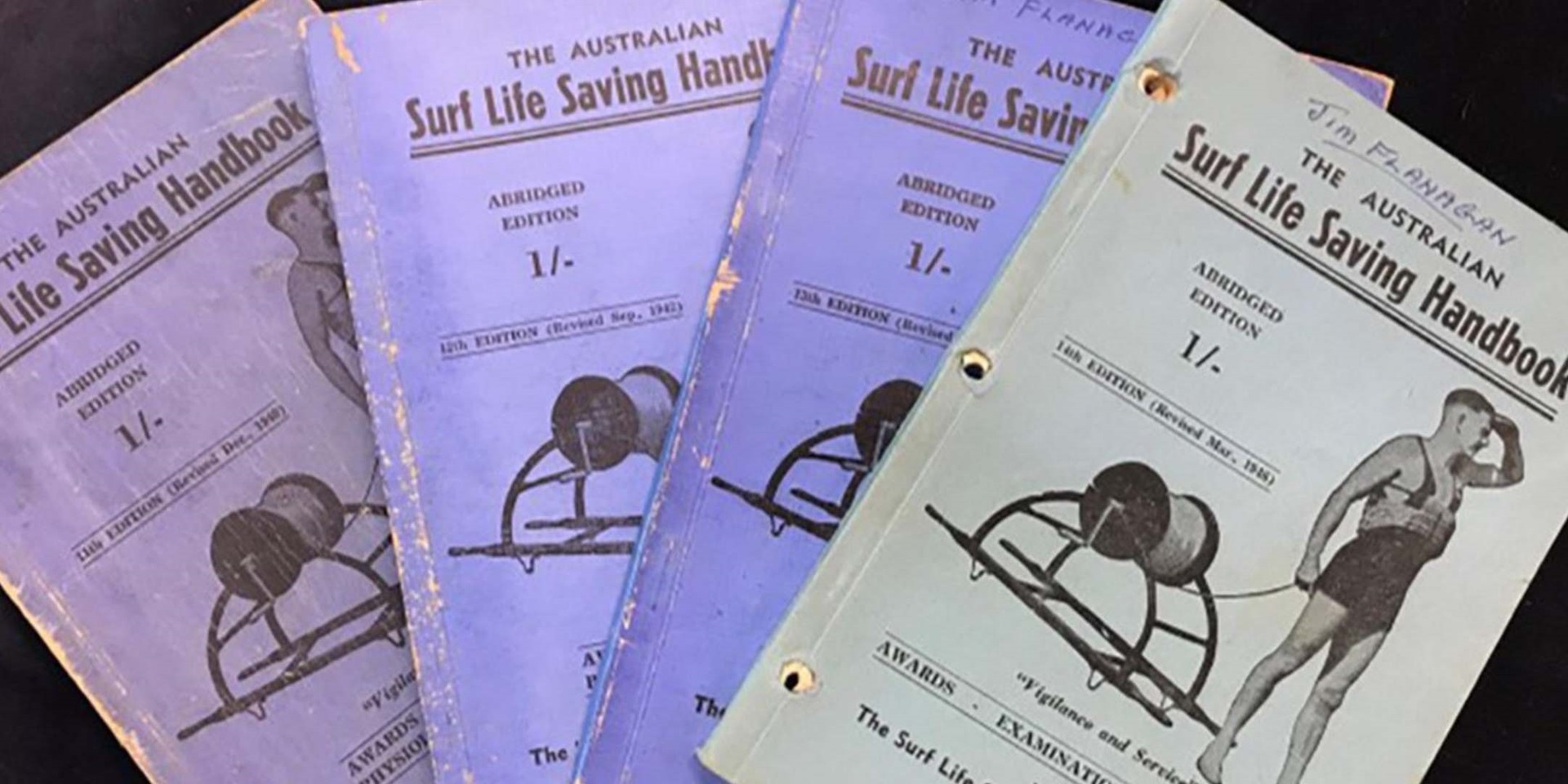

Surf Life Saving Handbooks, from 1940 to 1946, at the Vaughan Evans Library. Vaughn Evans Library Collection.
Surf Life Saving handbooks of yesteryear
The first week of September is history week and the theme for 2018 is ‘Life and Death’.
Each weekend, many Australians flock to the sea for fun, sport and recreation. It is part of the Australian way of life – a place of work and play. At the same time, the sea can be harsh, unpredictable and deadly. A true symbol of life and death at sea is the Australian Surf Life Saving movement, a group who work tirelessly to prevent death at sea and ensure Australians can safely enjoy all that a coastal lifestyle has to offer.

Surf Life Saving Handbook, from 1926, at the Vaughan Evans Library. Vaughn Evans Library Collection.
Making the surf safe
At the Vaughan Evans Library, we have a collection of handbooks and memorabilia from the Surf Life Saving Association of Australia. This collection provides us with a glimpse into the history of this iconic organisation: the earliest handbook in the collection is from 1926 in which “medical instructions and advice” are outlined including sections on “circulation of the blood” and “Respiration”. The Vaughan Evans Library holds several of these Surf Life Saving Handbooks, dating from 1926 to 1964.

“Australia is the land of beaches.” – The introduction of Surf Life Saving Handbook, circa 1926. Vaughn Evans Library Collection.
Australians took to the surf in increasing numbers from the early 1900s, when swimming became more popular and daylight bathing was embraced. But the often dangerous surf conditions caused an increase in drownings, highlighting the need for safety in the surf. And so, the community-based Surf Life Saving movement was borne. The still-water rescue and resuscitation techniques developed by the Royal Life Saving Society of Australia were adopted by the newly formed, community based surf-bathing clubs.

Basic anatomy in the form of blood circulation and an introduction to the respiration system. Vaughn Evans Library Collection.

Image from Surf Life Saving Handbook 1926, page 120. Vaughn Evans Library Collection.
A Royal visit
In addition to the handbooks, among this collection, there is a souvenir programme from the Royal Visit Surf Carnival, 1954. This carnival was held on Bondi Beach on Saturday, 6th February 1954. Inside the programme, there is a message of welcome from the Surf Life Saving Association to the Queen as well as from many local companies, such as Qantas (see image below). It is a fascinating memento of an exciting event.

Surf Carnival Souvenir Programme, Royal Visit 1954. Vaughn Evans Library Collection.

A welcome to Queen Elizabeth II in the Surf Life Saving Association of Australia, Royal Visit 1954, souvenir programme on behalf of event sponsor QANTAS. Vaughn Evans Library Collection.
Preventing another Black Sunday
Coincidentally, the Queen’s visit fell on the 16th anniversary of Black Sunday: A dark day in the history of Bondi Beach. On a warm February afternoon, unusually large waves created a strong rip which quickly pulled some 200 swimmers out to sea (numbers vary among reports of the incident).
Luckily, there happened to be 60 surf lifesavers on the beach for a competition, who sprung into action.
Five swimmers died and 35 people had to be resuscitated.
Surf Life Saving Australia continues to be a community-based cause, committed to reducing coastal drownings by 50% by 2020. In NSW alone, there are 129 clubs running down the coast. On average, each day lifesavers rescue 30 people and they undertake 451 preventative actions every hour.
— Anna Tennant, Library Assistant
During history week the Vaughan Evans Library will be hosting a series of events in relation to life and death at sea. Please see here for details. Book now so you don’t miss out.